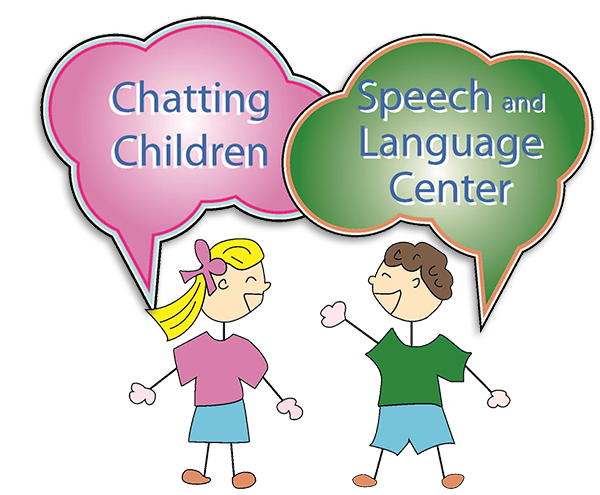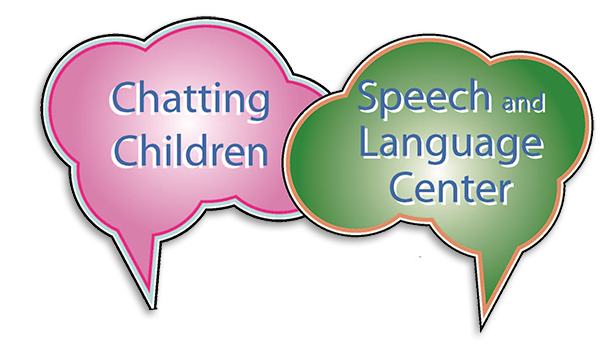Early intervention, accurate diagnosis, and specialized treatment plans are crucial for all communication disorders. However, children exhibiting the disorders listed below require highly skilled therapists to diagnose the disorder and develop very specialized treatment plans. If you have questions or concerns, please don’t hesitate to contact us. We’re here to help!
TITLE
DESCRIPTION
RED FLAGS
If your child demonstrates several of the following characteristics, a speech and language evaluation may be necessary.
- Doesn’t babble by 9 months
- Doesn’t respond or react to name by 12 months
- Doesn’t wave “bye bye”, point or use other gestures by 12 months
- Doesn’t use single words by 12 months (e.g., mama, dada, ball, doggie)
- Doesn’t point to body parts, pictures or objects by 18 months
- Doesn’t combine 2 words by 24 months
- Doesn’t have a vocabulary of 50-00 words by 24 months
- Doesn’t pretend play with a baby doll, car or figurine
- Doesn’t use specific vocabulary when talking and depends more on use of abstract words (e.g., this, that, right here, over there)
- Doesn’t use action words or correct grammar (running, ate, will sleep)
- Has difficulty producing clear speech sounds (substitutes, omits or distorts speech sounds)
- Drools frequently or presents with an open mouth posture the majority of the time
- Has an unusual vocal quality, high pitched voice or a sing-song prosody
- Is distracted or has difficulty attending to specific activities
- Has difficulty making friends or interacting appropriately with peers
- Doesn’t ask questions by 3 years of age
- Doesn’t engage in back and forth communication by 3 years of age
If your child demonstrates several of the following characteristics, speak to your pediatrician about an evaluation. Your local birth to three agency or a developmental pediatrician can provide necessary information and evaluations. Early speech and language therapy is crucial for children with autism spectrum disorders.
- Doesn’t respond to name being called at 12 months of age
- Doesn’t use appropriate eye contact or prefers to be alone
- Demonstrates unusual behaviors such as flapping hands, spinning in circles, rocking their bodies
- Doesn’t engage in pretend play (e.g., hugging, rocking or feeding a baby doll)
- Lines up toys in the same way each time instead of playing with them
- Shows interest in unusual things (e.g., light switches, wheels, batteries)
- Becomes upset with minor changes in routine
- Repeats words or phrases over and over (e.g., dialogue from favorite TV shows or movies)
- Experiences difficulty responding to questions (or repeats the question vs. answering the question)
- Experiences difficulty pointing to named objects
- Avoids physical contact
- Does not demonstrate back and forth gestures by 12 months (e.g., showing someone a toy, waving bye bye, pointing)
- Does not use meaningful words by 16 months of age
- Loses words or does not use words that they once said
- Demonstrates unusual reactions to different textures
- Demonstrates excessive interest in numbers and/or letters
Professionals and researchers are not in complete agreement regarding the characteristics that define verbal apraxia (or apraxia of speech). Some of the characteristics mentioned below appear in other severe communication disorders. However, if your child demonstrates several of the following symptoms a speech and language evaluation is highly recommended.
- Does not coo or babble as an infant
- Demonstrates good comprehension of language
- Late talker
- Omits sounds and/or syllables from words
- Sound errors are inconsistent
- Demonstrates a groping pattern with mouth muscles when attempting to repeat words
- Has difficulty imitating speech
- Better use of spontaneous/automatic speech
- Has difficulty with multi-syllabic words (e.g., hospital, animal)
- Difficult to understand (specifically in connected speech)
- Makes sound substitutions (e.g., POP for POT)
- Produces vowel sounds incorrectly
Other learning difficulties, speech and language deficits, and neurological problems are likely co-existing. Therefore, professionals may not readily consider apraxia of speech as a diagnosis. Accurate diagnosis is crucial for a successful treatment plan. A very specific and intensive treatment plan is required for children with signs of apraxia.
SOURCES:
- American Speech-Language-Hearing Association (ASHA)
- Apraxia-Kids
- Autism Speaks
- Evaluating and Enhancing Children’s Phonological Systems, Barbara
- Williams Hodson, PhD, 2007
- First Words Project (Wetherbyet al., 2004; McCoy, Wetherby, & Woods, 2009)
- Learning Disabilities Association of America
- Kids Language Center, LLC

